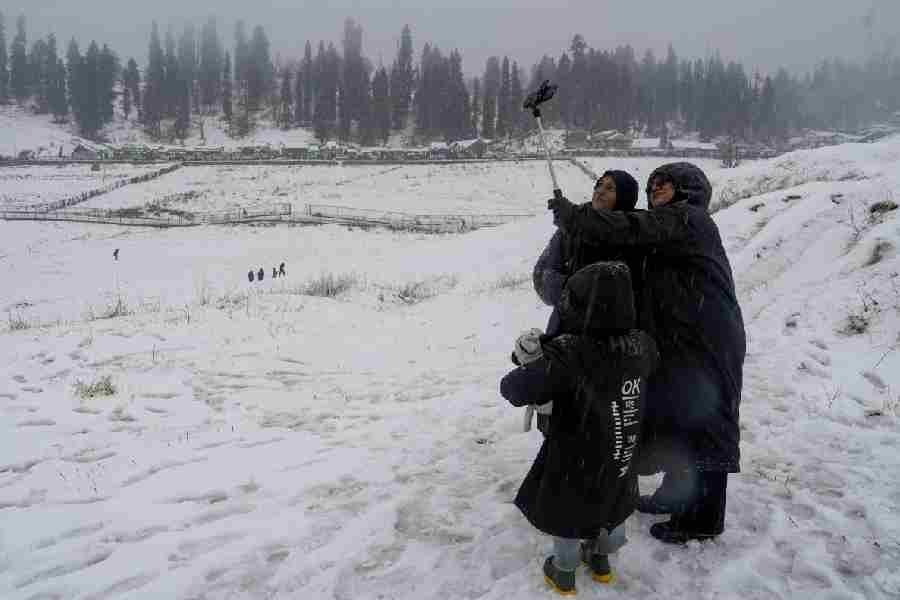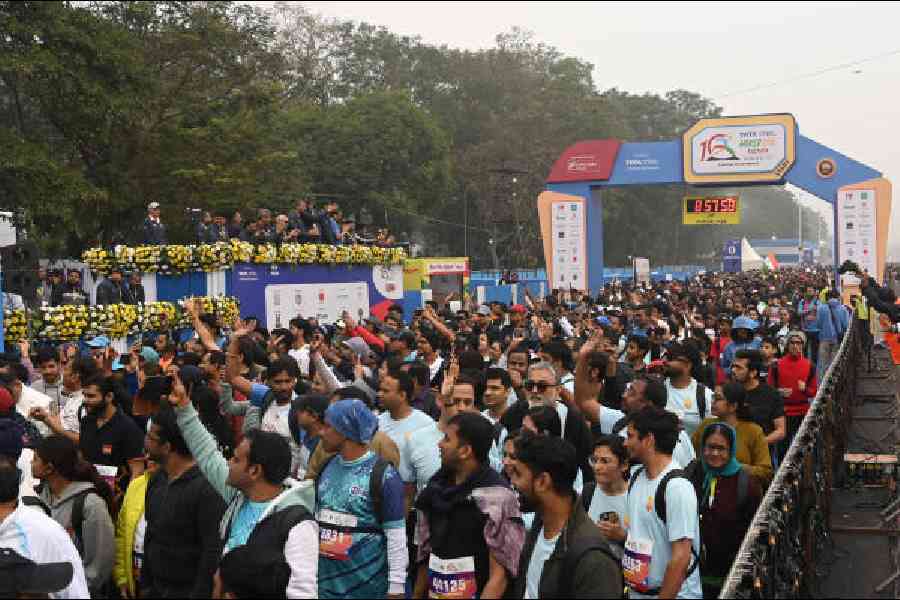|
|
| Bar dancers demonstrate in Mumbai |
One of the reasons the India Shining slogan was such a bad joke is that the lives of Indian women prove, in a hundred ways, that they continue to be second-class citizens. Indeed, recent events may force even the most optimistic of women to wonder if they have slipped one rung down the ladder ? whether they have now become third-class citizens.
Consider only the most ?sensational? of the list. First there is the witch-hunting of women in Mumbai who earn a livelihood dancing in bars. Whatever the morality police may say, these women are not the imagined glamorous vamps of Bollywood dancing item numbers. They are real women, as many as 75,000 victims of poverty, unemployment, lack of education and negligible vocational skills. They are vulnerable to sexual exploitation, health risks and police harassment. But to hear the witch-hunters, the bar girls are the vessels of all anti-social activity. They are immorality incarnate, corrupting all those politicians and policemen and decent upright men who frequent these bars. Public morality is a helpless infant, and the witch-hunters have to play guardian. If the bar girls lose their precarious means of livelihood, if they are pushed into prostitution, that is not the concern of the morality police ? whether of the BJP, Shiv Sena or Congress variety. And though the Mumbai bar girls come from all over India, the ?rehabilitation? package (announced as an afterthought) is only for women from Maharashtra.
Then a sixteen-year-old girl is raped in broad daylight in Marine Drive by a drunken constable. There is, naturally, anger and protest. But there are also reactions that sidestep the central issue of increasing crimes against women by those in positions of authority. An editorial in the Sena mouthpiece, Saamna, does not say, in so many words, that the girl is guilty of ?inciting? the drunken constable. But what are we to make of the Sena?s reaction of cautioning girls against ?low-waist jeans and mini skirts?
What do we make of the question, ?If a man is incited by such clothes, who can we blame?? If a woman wants to be safe, she has to learn where that Laxmanrekha is drawn. And the Sena leader, Pramod Navalkar ? a self-appointed expert in both morality and Indian culture ? describes this rekha with geographical precision. Navalkar claims that the way in which girls ?socialize? today is ?exceeding all limits. In the good old days, girls from Ghatkopar would not venture to Chowpathy.? Another ?senior? Sena leader, Narayan Rane, says, ?The changing culture is perhaps responsible for the rising rapes against women.? (Rane says nothing about the changing culture that allows women ? Hindu women at least ? to be organized into stepping out of their homes to participate in crimes of hate.)
Next, a sessions court in Delhi admits a marriage proposal from a man convicted of rape. In 2003, a ward boy in a hospital in East Delhi brutally raped a nurse, blinding her in one eye. Two years later, when the court is to announce his sentence, an application is moved: ?To save the life of the victim as well as both the families, the convict from the core of his heart without prejudice to the merit of the case is ready to marry her.? The additional sessions judge asks the victim and her family to file a reply; the proposal is actually being taken seriously. Even worse, the judge indicates that the victim?s punishment may be reduced if the marriage takes place. If you see the victim of rape as a secondclass citizen to begin with, it is that much easier to ?rehabilitate? her life by getting her married ? and to the rapist. After all, you may reason, who else will marry her?
Meanwhile, despite the efforts of women?s groups over the years, a model nikaahnama announced by the All India Muslim Personal Law Board does not include any real, basic reform. Perhaps this is unsurprising. The board is clearly a conservative religious entity, not exactly devoted to the rights of women. Even so, the board had raised some hopes by asking women?s groups to contribute their viewpoint. But the model announced by the board does not reflect the draft prepared by the women?s groups. It merely ?advises? men to avoid triple talaq. The board says it all with the code of conduct it lays down for men and women: the husband should be a good Muslim and look after his wife; the wife should obey him and support him. Though years of struggle have led to access to family courts to settle disputes, the model suggests that if the family is unable to arbitrate on differences between a husband and wife, they should go to the equivalent of a shariat court. In short, these victims of conservatives from both Muslim and Hindu camps, should go back to their familiar little ghetto.
There?s a pattern that brings together all these victims ? the bar girls and the raped nurse and student and the Muslim women being coaxed into submission with stray crumbs of kindness. All these cases reveal some deeply disturbing assumptions. One assumption is that the most conservative elements in society, part of the patriarchal army that made women second-class citizens in the first place, have the authority to tell women what their rights are and how and where to exercise them; instruct them on how to be safe; and how to heal their wounds. The oldest method behind the patriarchal madness is to make the victim responsible ? for what is perpetrated on her, for her rehabilitation, for the recovery of the moral order.
Making the victim responsible has served as an effective way to keep women out of large chunks of the world?s places and experiences. It has, over generations, instilled an amorphous fear in women, fear of what their bodies can cause. Male-dictated tradition has it, whether in history, literature or popular folklore, that women cause men to stray from the straight path. So ingrained is all this received wisdom in our society that it survives the onslaught of time, new ideas, even new ways of looking at women?s rights.
Despite appearances, there is, as always, hope, even in these dark times for Indian women. There is a little glimmer of hope to be found in the immediate and angry reaction of the nurse whose rapist proposed to her through a court of law. The nurse?s reaction pulls us back from dangerous nonsense about repentance and forgiveness culminating in marriage. ?It?s like being raped for the second time,? she says. Her words bring us back to what has actually happened to a woman; to what can happen again. The bar girls have come together as the Bharatiya Bar Girls Union to fight for their right to a livelihood.
Women?s groups are, as always, working hard, not only to fight physical violence against women, but violence of a more insidious variety, the kind that delivers blows through ideas, beliefs, prejudice. But the uphill climb is futile if only women undertake it. It has to be a far more public hike, judges, policemen and scripture-men included.











